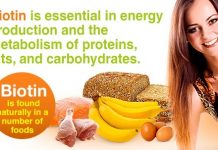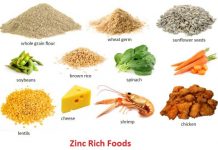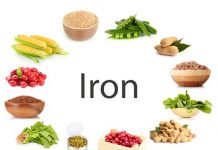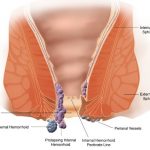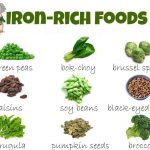In this article we will suggest some of the top foods high in magnesium. Magnesium is the 8th most abundant mineral found on earth. And, it is the fourth most abundant mineral present in the human body. It is responsible for more than 300 biochemical reactions in your body and is found in every cell type. Around 50 to 60 percent of all magnesium in the body is present in the bones and only a small fraction is stored in the blood. This nutrient is mainly important for following parts and process of the body.
Benefits and Function of Magnesium in Our Body:
- To regulate blood pressure.
- Healthy bones
- Protein synthesis
- For proper blood circulation.
- Neurotransmitter release
- For restful sleep
- Blood sugar control
- For a strong immune system.
- For a proper nerve functioning.
- Muscle Health
- Energy metabolism
- Heart health
- Production of the antioxidant glutathione.
- Absorption of Vitamin D.
- For proper elimination
- For proper digestion of carbohydrates.

So now you know how important magnesium is for your body. Any deficiency of magnesium can cause several health problems and symptoms.
Signs of Lack of Magnesium:
- Numbness and tingling feeling.
- Abnormal heart rhythms
- Muscle cramps
Plus, Magnesium deficiency is also associated with the following conditions:
- Hypertension
- Heart disease
- Insomnia
- Diabetes
- Asthma
- Anxiety
- Migraine
- Panic attacks
- Musculoskeletal conditions such as fibromyalgia, chronic back pain, etc.
According to different studies, most of the people are not getting sufficient magnesium and can be deficient. Some of the causes of magnesium deficiency are listed below.
Causes of Magnesium Deficiency:
- Consuming unhealthy and improper diet.
- Excessive intake of alcohol.
- Excessive or chronic vomiting
- Poorly controlled diabetes
- Long-term diarrhea
The suggested dietary allowance for magnesium varies on age, sex and whether a woman is pregnant or breastfeeding. Below is the recommended dietary allowance of magnesium for children and adults.
| AGE (Years) | 1-3 | 4-8 | 9-13 | 14-18 | 19-30 | 31+ |
| MALES (mg/day) | 80 | 130 | 240 | 410 | 400 | 420 |
| FEMALES (mg/day) | 80 | 130 | 240 | 360 | 310 | 320 |
| PREGNANCY (mg/day) | N/A | N/A | N/A | 400 | 350 | 360 |
| LACTATION (mg/day) | N/A | N/A | N/A | 360 | 310 | 320 |
So, now as you know how much of the magnesium you should take according your age and gender. Next question that arises here is what are the foods that are high in magnesium content? To answer this, we have suggested below some of the top foods high in magnesium that are easily available.
List of Foods High in Magnesium:
1.) Dry Roasted Soybeans
Most of the people are familiar with the health benefits of soybeans. These nutrient-rich legumes has a very high amount of vitamins, fiber, minerals, and amino acids. A half-cup serving of dry roasted soybeans gives almost half of the required magnesium for the day. Magnesium and other Minerals and Vitamins found in soybeans are very essential in maintaining a healthy immune system. It helps keeping a normal heart rhythm, and building strong muscles and bones.
Serving Suggestion: Half cup of roasted soybeans has 196 milligrams of magnesium (49% DV) and 405 calories.
2.) Avocados for Magnesium Rich Diet
Avocados are known to offer a variety of health benefits to your body. They can help effectively in preventing or inhibiting the growth of several cancers, protecting you from cataracts, lowering bad cholesterol, and preventing heart disease and strokes. If you think that you are not getting sufficient magnesium, avocados are rich in that as well. Include an avocado to your plate each day and enjoy the health benefits provided by it.
Serving Suggestion: 1 avocado has 58 milligrams of magnesium (15% DV) and 322 calories.
3.) Cooked Spinach as Foods High in Magnesium
Cooked spinach is high in almost every nutrient present on earth. It’s a healthy and low-calorie super food that contains 157 milligrams of magnesium per cup. You can eat spinach, raw as well. This makes it a great choice for salads. Though, cooking the spinach slightly before consuming increases the amounts of some nutrients that your body will absorb.
Serving Suggestion: 1 cup of cooked spinach has 157 milligrams of magnesium (39% DV) with 41 just calories.
4.) Bananas as Foods High in Magnesium
Bananas and several other fruits make great energy-boosting snacks when you are looking for that extra push to get you through the day. Have a banana when you feel hungry next time. You’ll be loading your body with a number of Minerals and Vitamins. A medium-sized banana has 32 milligrams of Magnesium, along with Fiber, Potassium, Vitamin C, and many others.
Serving Suggestion: 1 medium banana has 32 milligrams of magnesium (8% DV) with 105 calories.
5.) Whole Milk for Magnesium Rich Diet
Calcium and Magnesium make an amazing healthy combo. When you’re consuming sufficient magnesium, it is easier for your body to absorb Calcium and use it for different body function. Whole milk is rich in both Magnesium and Calcium. Drink a cup of whole milk regularly. It will help in making your bones strong and healthy along with preventing osteoporosis.
Serving Suggestions: 1 cup of whole milk contains 24 milligrams of magnesium (6% DV) with 146 calories.
6.) Oatmeal for Magnesium Rich Diet
Most of the people are aware that oatmeal has been shown to lower bad cholesterol and high blood pressure effectively. They are also aware that oatmeal is high in fiber and is loaded with lots of antioxidants. Plus, oatmeal is full of several other Minerals and Vitamins. One of them is Magnesium. A 3/4 cup serving contains 47 milligrams of magnesium. It’s an ideal way to start a healthy day.
Serving Suggestions: 3/4 cup of oatmeal has 47 milligrams of magnesium (12% DV) with just 124 calories.
7.) Flaxseeds as Foods High in Magnesium
Flaxseed is one of those super foods that one must incorporate into their diet. Just 1 tbsp of flaxseed provides 10% of the required amount of magnesium per day. It’s very easy to include 1-2 tablespoon of flaxseed into your diet by sprinkling it over your meals, blending it with a fruit smoothie, or mixing it in your juice.
Serving Suggestion: 1 tablespoon of flaxseed 39 milligrams of magnesium (10% DV) with just 53 calories only.
8.) Dried Coriander as Food Rich in Magnesium
Dried coriander seeds are extensively used in Asian, Latin, and Mediterranean cuisines. Coriander has a nutty citrus flavor which enhances the taste and aroma of many meals. They also provide Magnesium and several other nutritional benefits to your meal. One tablespoon of dried coriander provides 14 milligrams of magnesium. It’s an excellent way to give more flavor and nutrients to your favorite meals.
Serving Suggestions: 1 tablespoon of dried coriander has 14 milligrams of magnesium (3% DV), with only 5 calories.
9.) Black-Eyed Peas as Source of Magnesium
Black-eyed peas are inexpensive enough that you can keep in abundance without causing you much money. Plus, they’re as easy on your body as they are on your pocket. Black-eyed peas are a powerhouse of nutrition that provide your body with high levels of Potassium, fiber, protein and iron. If you want to include more magnesium in your diet, black-eyed peas contains 91 milligrams per cup serving. It is almost a quarter of the recommended amount of Magnesium per day.
Serving Suggestion: 1 cup of Black-eyed-peas provide 91 milligrams of magnesium (23% DV) with 200 calories.
10.) Dark Chocolate is Deliciously Rich in Magnesium
Generally, chocolate has a bad rap due to its sugar and high calorie content. But are you aware that certain types of chocolate can also offer many health benefits? Dark chocolate is one such chocolate which is good for your heart, brain, and blood sugar if taken in small doses. Dark chocolates are full of antioxidants, Minerals, and Vitamins including Magnesium. A 1.45 ounce chocolate bar contains about 13 milligrams of this essential mineral.
Serving Suggestion: 1 bar, 1.45 ounces of dark chocolate has 13 milligrams of magnesium (3% DV) with 218 calories.



